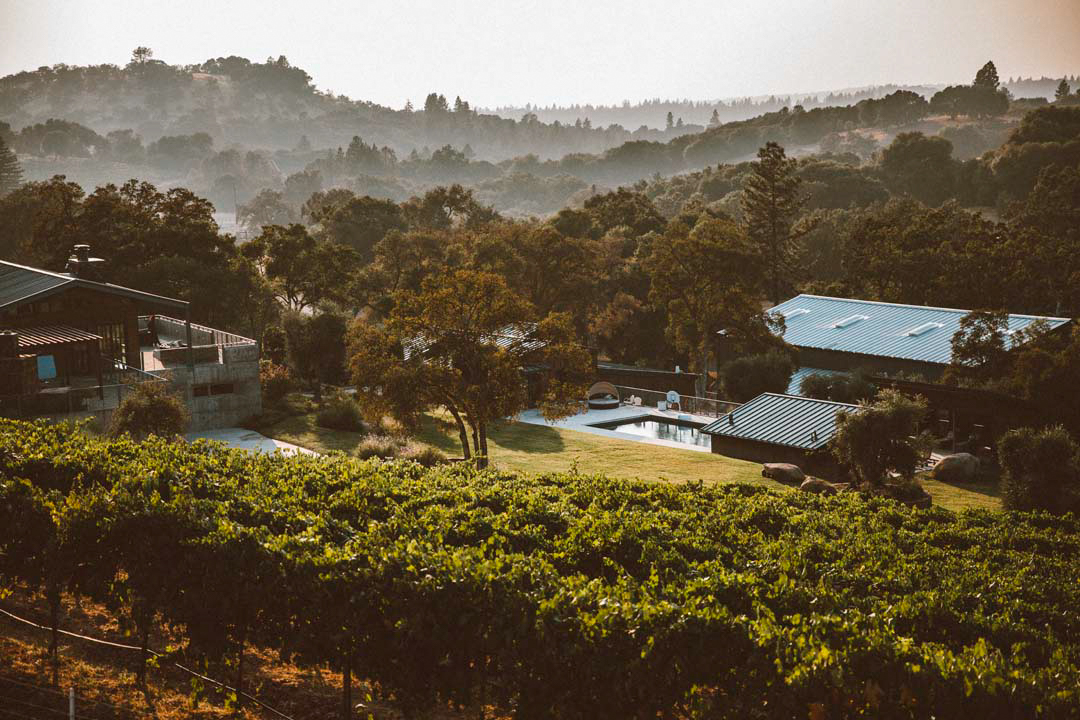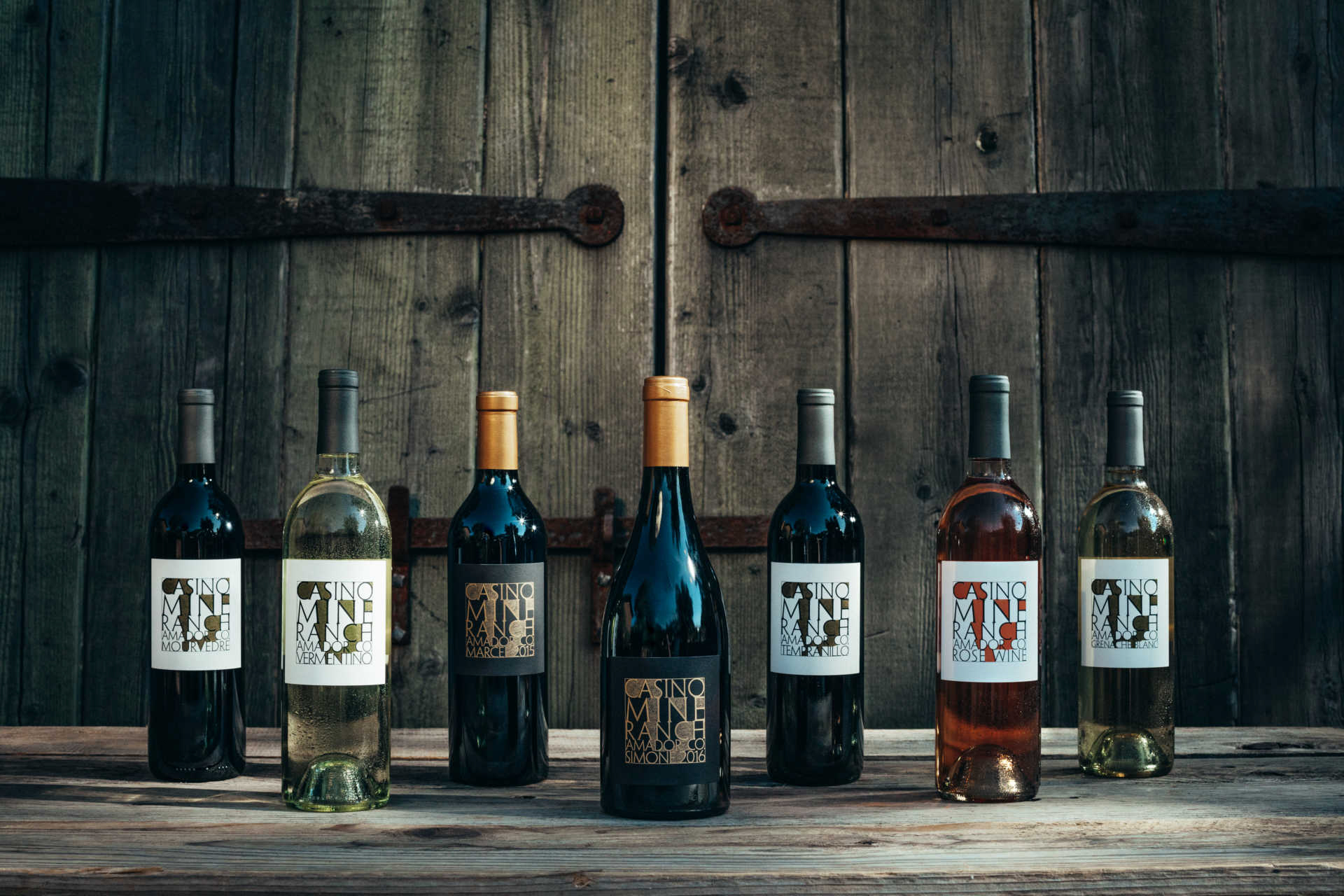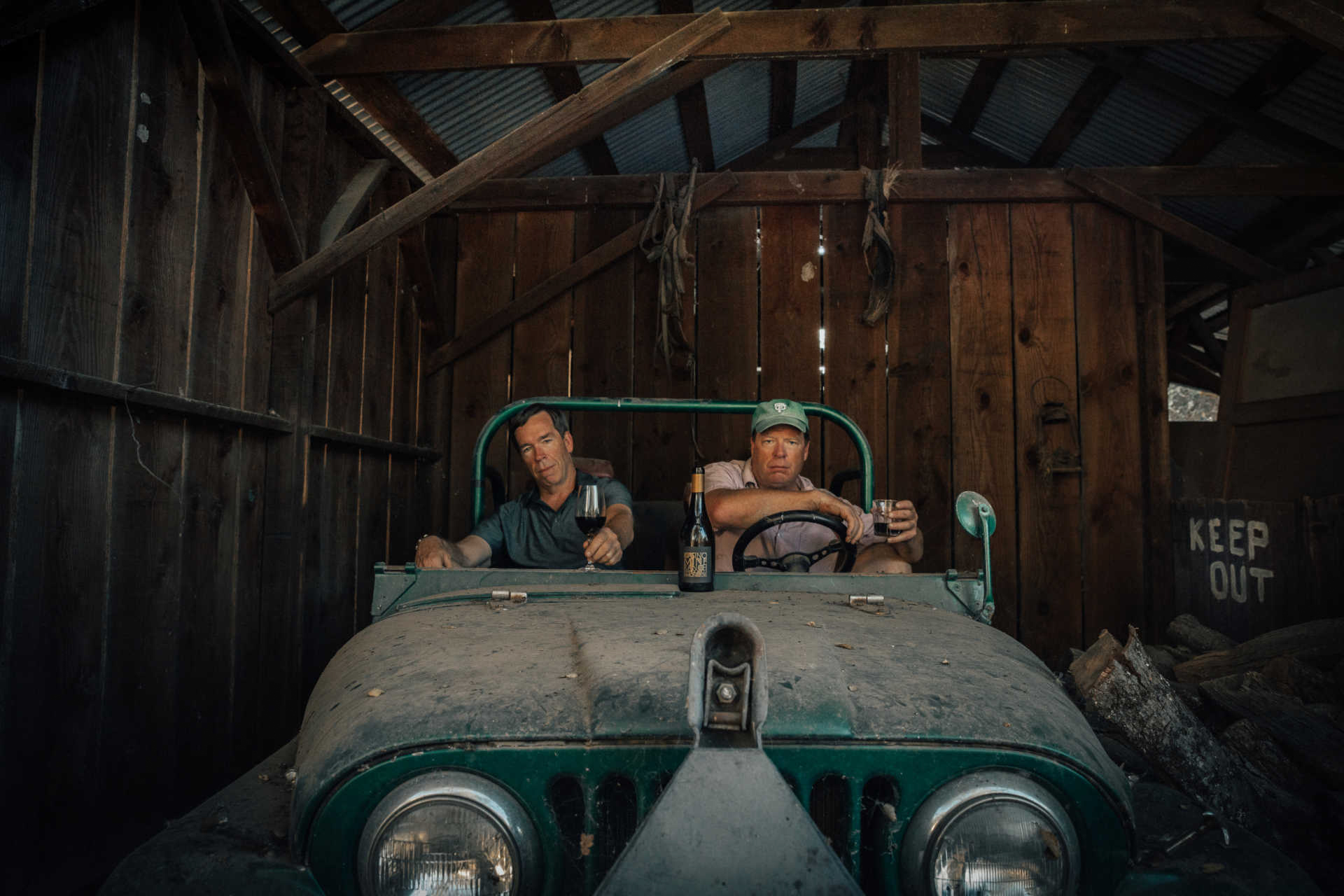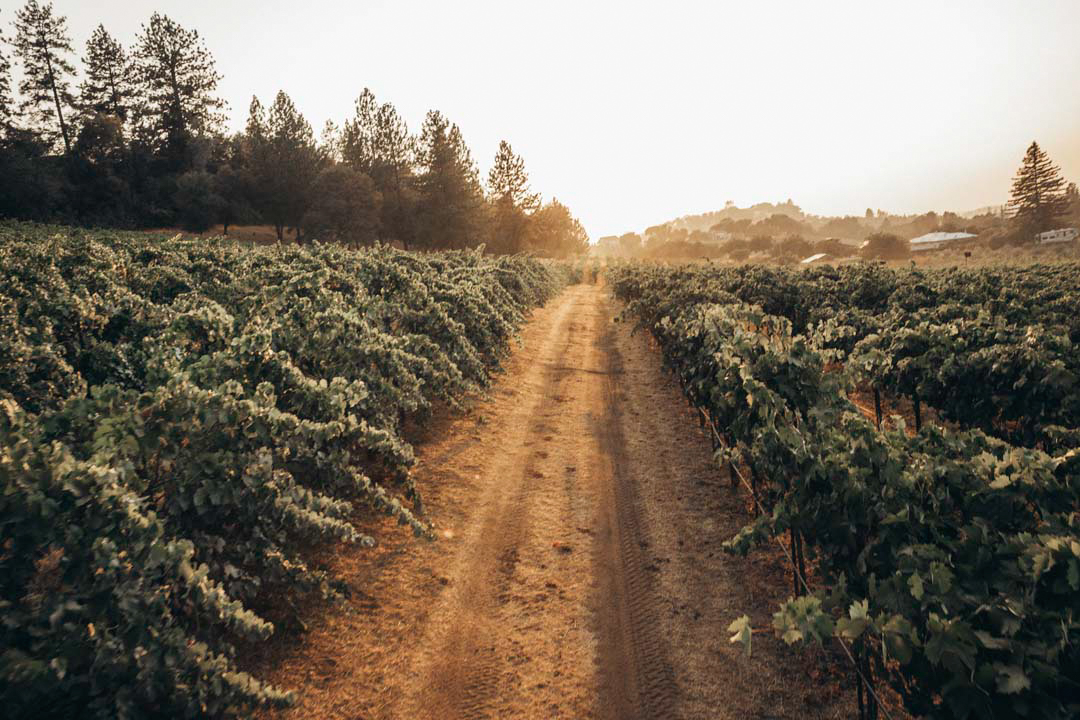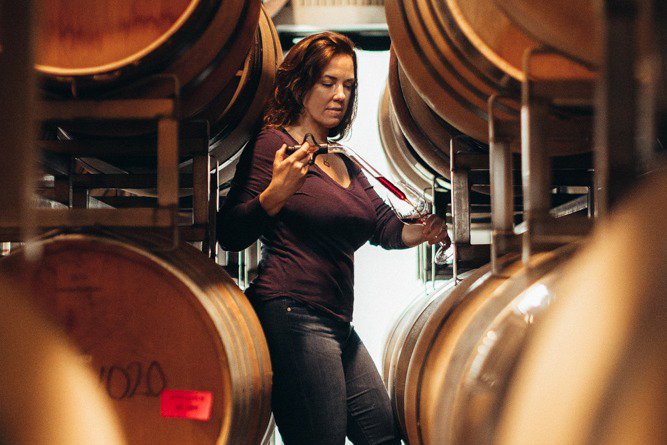Casino Mine Ranch
UNEARTHING THE UNEXPECTED. Casino Mine Ranch is an estate vineyard located in the Sierra foothills of Amador County. The winery, a century-old ranch that was once mined for gold, is owned and managed by fourth-generation California brothers, Jim and Rich Merryman. The vineyard is planted and farmed to best harness the potential of the site, through thoughtfully selected grape varietals. In keeping with the family’s pioneering spirit, the Merryman’s partnered with the highly acclaimed winemaking team of Andy Erickson and Jessica Tarpy who share a passion for great wines from special sites. Together with their commitment to hard work, connection to the land, and passion to produce the best wine possible they are pursuing a legacy that honors the history, family, and the land.
In 1936, Simone Shaw, daughter of an Alaskan miner and Belgian aristocrat, purchased a property in Amador County hoping to find gold. She called it “Casino Mine Ranch” because she knew it would be a gamble to find any gold. Today, more than 80 years later, Simone’s great nephews Jim and Richard Merryman look after the property, which includes a vineyard of an unusual array of grapes. The legendary Andy Erickson and winemaker Jessica Tarpy Shaheen make the wines and a new history is being written for Casino Mine Ranch.
In 2011. After planting 14-acres of vineyard, it seemed natural to keep the “Casino Mine Ranch” name because the wine business is also a gamble. If you take a close look at the wine label, you’ll recognize it as gold being sifted through a slough box, reflecting the land’s mining past and the quartz and clay-filled soil. Together with its exceptional winemaking team, a reverence for farming, and dedication to the industry, the Casino Mine Ranch team thinks they’re onto something special and we whole-heartedly agree.
ANDY ERICKSON, CONSULTING WINEMAKER: It was a drunken promise, made half-seriously at a party, years ago. As far as Andy knew, Casino Mine Ranch was a wild old rambling property with abandoned mining caves where he and Rich went skeet shooting and drank Bud Light. But then Rich really did put in a vineyard. And it was a fine vineyard, planted with exotic treasures like Teroldego and Vermentino. Meanwhile, Andy had achieved demigod status among winemakers, making his mark at Screaming Eagle, Harlan Estate, Staglin Family Vineyards, and Mayacamas Vineyards. He and his viticulturist wife, Annie Favia, have two daughters, and helm their own wine labels, Favia Wines and Leviathan. But Andy still helps us out, and it is possible that he has not outgrown skeet shooting and Bud Light.
JESSICA TARPY SHAHEEN, WINEMAKER: Jessica and her husband, Andrew Shaheen, make Amador County Tempranillo under their own small label, Gather, so she gets us. Jessica is a winemaker because she spent a summer in Pisa eating gelato and decided to major in Italian and one thing led to another. There were the Florence years, the wine retail years, and the postbac (that’s the European way to say “postgrad”) studies in enology and viticulture. Jessica has made wine in many interesting places, including Klein Constantia in South Africa. With Andy Erickson and Annie Favia, she owns the experimental label ROOM. Jessica describes the motley mix of grape varieties grown here on the ranch as a “gumbo pot.”
AMADOR COUNTY:
California’s wine industry took flight during the Gold Rush of the 1850s, amid the rugged western foothills of the majestic Sierra Nevada mountain range. As fortune seekers, many of them European, flocked to the Sierras to prospect for gold, small wineries arose to help slake their thirst. Within a few decades, there were over 100 wineries in the area known as the Mother Lode, more than any other region of California. Some of the vineyards planted during that era survive to this day.
The decline of gold mining at the end of the 19th-century, followed by the advent of Prohibition in 1920, devastated this frontier wine community, which remained dormant until the late 1960s. Then, a new generation of pioneers began migrating to the Gold Country’s Amador County, this time drawn by the region’s rolling, sun-drenched hillsides, warm daytime temperatures, and volcanic, decomposed granite soils – ideal conditions for producing top-quality wine grapes. When their robustly flavored wines, began attracting the attention of wine lovers throughout California and the U.S., the historic Sierra Foothills wine region was reborn.
Today, where gold once reigned, some forty wineries produce a new treasure: superb wines which have earned Amador County international acclaim.
